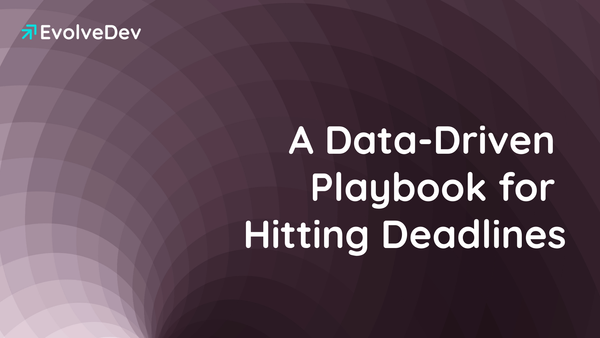Beyond Lines of Code: A Guide to the SPACE Framework

I read The SPACE of Developer Productivity (2021) this week. It was written by a group of researchers from Microsoft, GitHub, and the University of Victoria. (Authors: Nicole Forsgren, Margaret-Anne Storey, Chandra Maddila, Thomas Zimmerman, Brian Houck, and Jenna Butler.)
It's a great read because it gives a clear, actionable way to answer the question that every engineering leader is asked all the time: "How productive is our team?"
For decades, our field has tried to answer this with simple, real-world numbers. We count lines of code, pull requests, or commits in the hopes that these numbers will make it clear how far we've come.
But they never do, do they?
We know that a high commit count might mean that a developer is burning out to fix bad systems, not that they are at their best. Even if their individual PR count is lower, we know that the engineer who spends half their day mentoring others and doing thoughtful code reviews is very valuable. The old models feel flat because they are. They turn complicated, creative work into a single number.
The SPACE framework gives us a complete way to understand and measure what really matters. It's time to stop being busy and start thinking smarter.
The Myth of the Single Metric
The main problem with traditional ways of tracking productivity is that they think one number can tell the whole story. The SPACE framework starts by breaking down this idea, showing that productivity isn't just one number, but a group of things.
When you focus on one thing, like activity, you can't see everything else. It misses the important work that keeps a team healthy and a product stable, which is often "invisible." This narrow focus can lead to the wrong behaviors, making developers prioritize one metric over quality, teamwork, and their own health.
The Five Dimensions of SPACE
The SPACE framework says that you need to look at productivity through five different lenses to get a full picture.
- S - Satisfaction and Well-being: This is about how happy, healthy, and satisfied your developers are. It's an important metric that people often forget about. The study shows that being happy is a strong. A drop in well-being can be a sign of burnout and a drop in productivity long before it shows up in your activity logs.
- P - Performance: It's not about counting how much you produce; it's about measuring how well you do. Is the software bug-free and dependable? Is it good for both customers and the business? Performance links the work of the team to value in the real world.
- A - Activity: These are the numbers we all know: the number of commits, pull requests, deployments, and code reviews. The authors say that activity metrics are meaningless and could be dangerous when used alone, even though this data is part of the picture.
- C - Communication and Collaboration: Making software is a team effort. This part looks at how well people work together by looking at things like the quality of code reviews, how easy it is for engineers to find documentation, and how quickly new members learn the ropes.
- E - Efficiency and Flow: This means being able to finish your work with as few interruptions and delays as possible. It's about making your systems run smoothly so that developers can get into a "flow" state. This includes keeping track of how long it takes for a commit to go into production and how long it takes for teams to hand off work.
Putting the Framework to Use
So how do you use this? The paper suggests selecting a few metrics from at least three of the five dimensions. This makes what the authors call "metrics in tension"—a balanced view that helps you make better choices.
For instance, if you tell developers to skip meetings to get the most out of each person, you might see team collaboration suffer. You can find the right balance for your team by measuring both. You need to include perceptual measures, like surveys, to get a full picture of your team's lived experience. System data alone can never do this.
This framework is very useful, but it can be hard to understand. How do you collect, connect, and show data from all these different areas without it taking up all of your time?
The SPACE framework is the basis for our platform at EvolveDev.io. We give you the big picture you need to stop guessing and start seeing what's really going on in your engineering company.
We automatically show you Activity and Efficiency by connecting to your tools to keep track of metrics like Cycle Time and Deployment Frequency. This lets you see where the real problems are. With dashboards for sprints, projects, and business initiatives, we help you connect engineering effort to results and measure performance.
We show you how your team is working together by showing you how code reviews and workloads are spread out. This helps you make sure your team is working as a team. We directly affect Satisfaction by making things easier and clearer. The research shows that engineers are happier and healthier when they can spend more time building and less time fighting process. We give them the data they need to do this.
You need to see the whole picture to really understand and improve productivity.
Stop going after metrics that don't matter. Check out how EvolveDev.io gives you the big picture information you need to achieve real engineering excellence.





